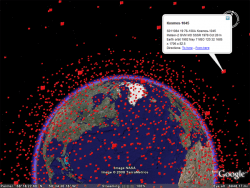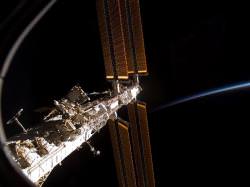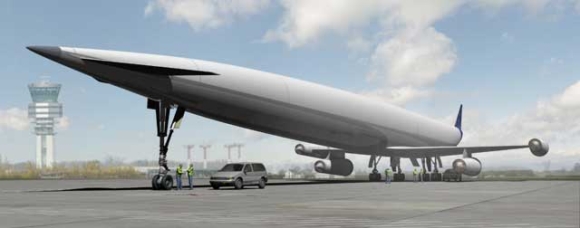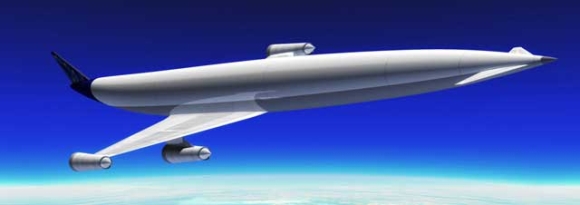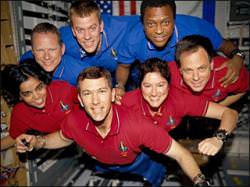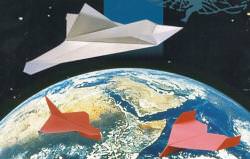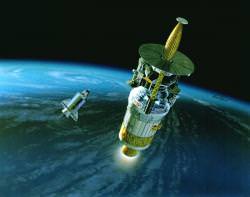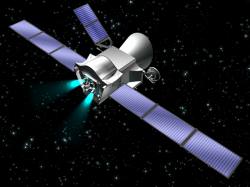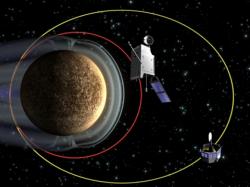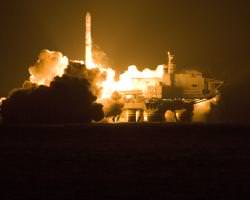Kessler Syndrome could be a frightening situation for space travel. No, it’s not a health risk to the human body in zero-G and it’s not a psychological disorder for astronauts spending too much time from home. Kessler Syndrome is the point at which space travel becomes impossible without hitting into a piece of space junk, jeopardizing missions and risking lives. In extreme predictions, space debris from our constant littering of low Earth orbit, collisions between bits of rubbish may become more and more frequent, causing a catastrophic cascade of debris multiplying exponentially, falling through the atmosphere and making space impassable.
In the meanwhile, space mission controllers must be acutely aware that there could be an odd bolt or piece of old satellite flying toward their spaceship at velocities faster than the fastest rifle shot. Spare a thought for the space debris trackers as they try to keep a record of the 9,000+ pieces of junk currently orbiting our planet… but wait a minute, Google Earth can give us a ringside seat!
Strict international civil aviation-style laws may need to be imposed on the worlds space agencies if future generations of the human race are going to make it in space. This stark warning comes from Tommaso Sgobba, Director of the International Association for the Advancement of Space Safety, who will be presenting his case to the United Nations in April. Sgobba’s main argument comes from the danger associated with the escalating accumulation of space debris in Earth orbit, should these high speed bits of junk hit a spaceship, satellite or an astronaut, death and disaster may ensue. It may get worse than this, possibly paralysing the Earth from having access to space at all.
“Failure to act now to regulate space to protect property and human life would be pure folly.” – Tommaso Sgobba.
Other scientists agree with Sgobba, recommending that future missions in to space abide by some strict codes of practice (possibly more strict than those imposed on international civil aviation) to drastically cut the rate of orbital littering by the 20 countries currently able to send stuff into space.
Even the most tightly controlled missions, such as the International Space Station, are expected to shed bits and pieces over the course of their lifetimes. Space junk comes in all shapes and sizes and can be anything from a small screw to entire dead satellites. Recorded examples of space junk include an old glove lost by Ed White during the first ever US space walk in 1965 (during the Gemini-4 mission), a camera that Michael Collins let slip in space in 1966 (during the Gemini-8 mission) and a pair of pliers that International Space Station astronaut Scott Parazynski dropped during an EVA last year.
Some space debris near misses include:
- Space Shuttle dodge: Space Shuttle Atlantis had to avoid collision with a piece of a Russian satellite by carrying out a seven second burn of its engines in 1991.
- Aircraft scare: Bits of an Russian ex-spy satellite fell through the atmosphere coming very close to a Latin American Airbus, carrying 270 passengers in 2006.
- Personal injury: fortunately there is only one documented account of someone being hit by a piece of debris on the ground. In 1997 a woman from Oklahoma was hit on the shoulder by a piece of a fuel tank from a Delta II rocket. She was unhurt and lived to tell the tail.
It is hoped that tighter controls on the rockets, satellites and spacecraft will slow the rate of junk increase, but the problem is already pretty worrying for long-term missions in orbit around the Earth. The two critical regions filling with debris are in low Earth and geosynchronous orbits, a few hundred and 22,300 miles high respectively. Low Earth orbit will cause problems for spacecraft to actually leave the atmosphere and geosynchronous orbit may hinder future communication satellite insertions.
To safeguard our access into space, and avoid an increase in debris-related incidents, action will need to be taken.
Google Earth-watch
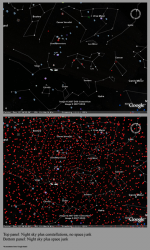
During the research on this article, I came across some work being funded by Ministry of Culture of the Republic of Slovenia, Municipality of Ljubljana, where researchers are making debris location data available to the public via a plugin for the Google Earth application. According to the groups blog, the data is taken from a U.S. government-owned space observatory so known space debris (or as the blog calls it “pollution”, which it really is) can be tracked.
On experimenting with the new space debris folder, it really did strike home as to what a problem space junk is becoming. For starters, there is an impossibly thick near-Earth layer and a distinct ring representing the geosynchronous debris. Plus, each item can be selected and information on the individual bits of debris can be found out… see the screenshots to find out what I mean…
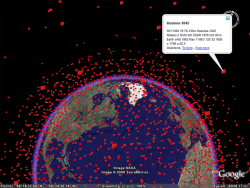
Get the space junk plugin for Google Earth (read Google Earth documentation to learn how to use this plugin).
News Source: Guardian.co.uk

